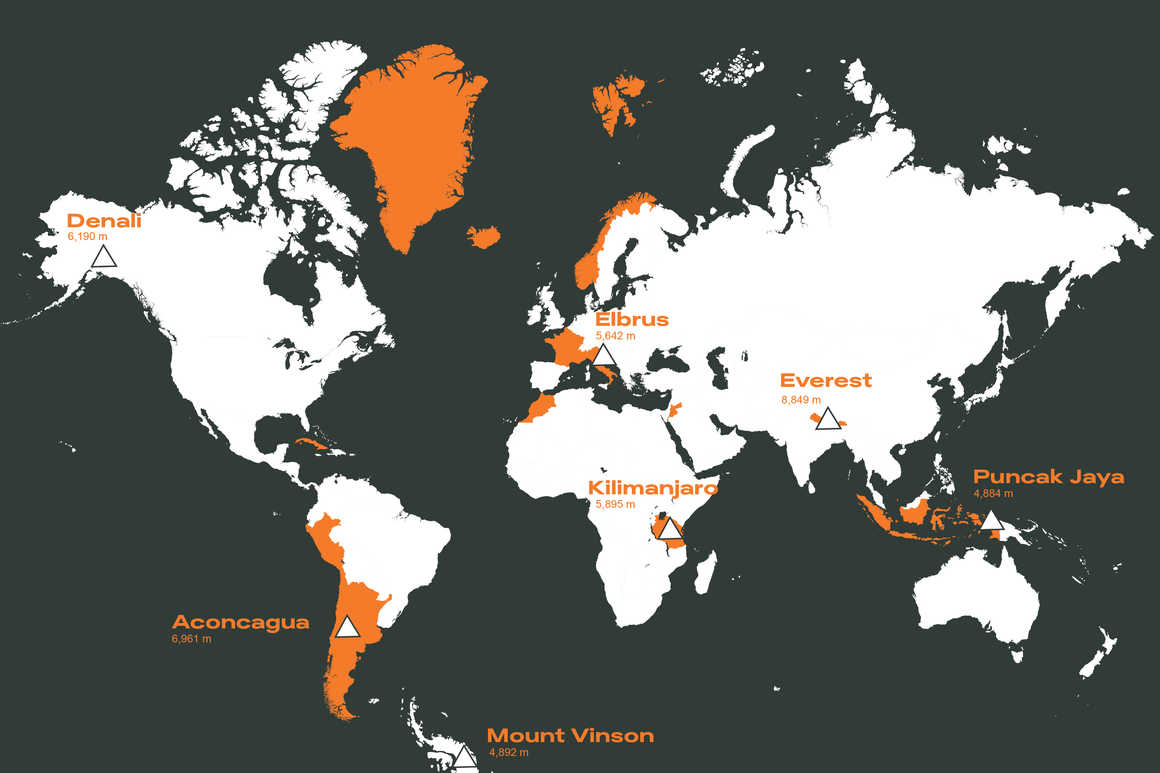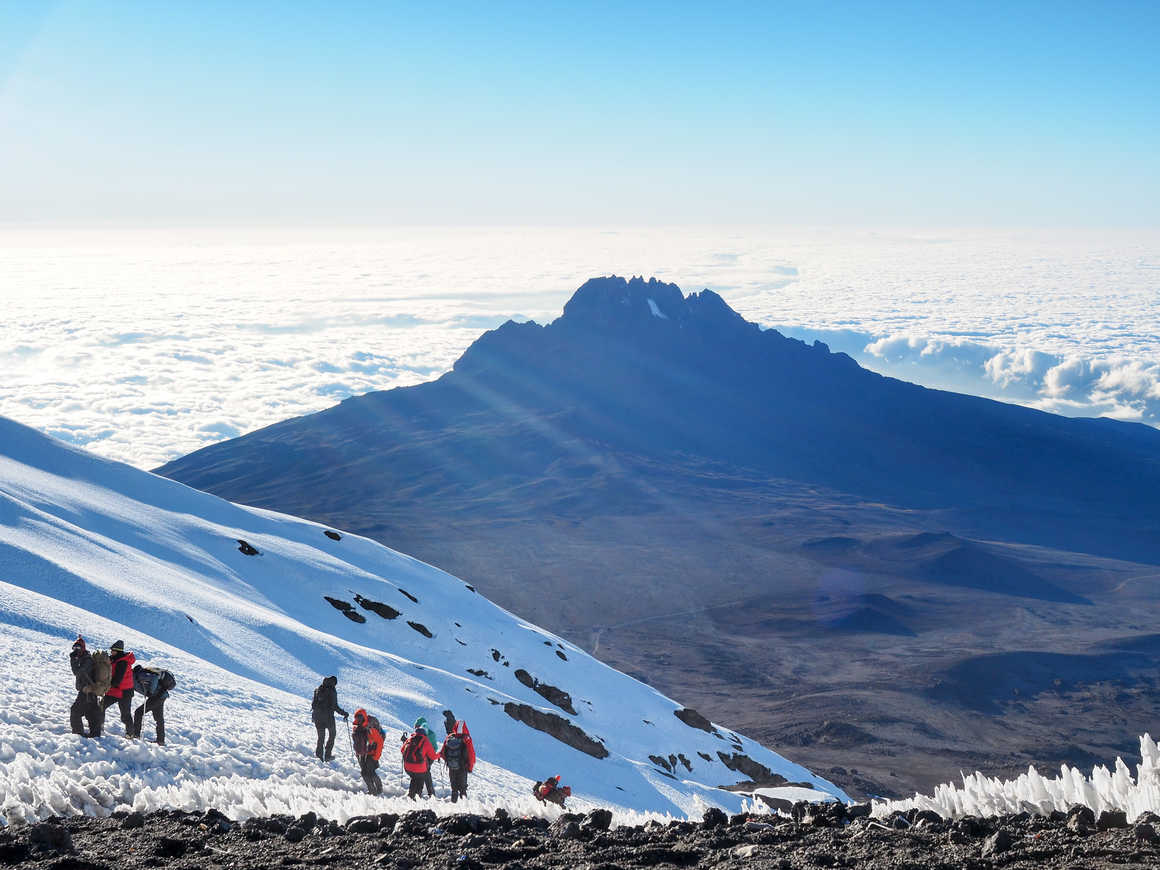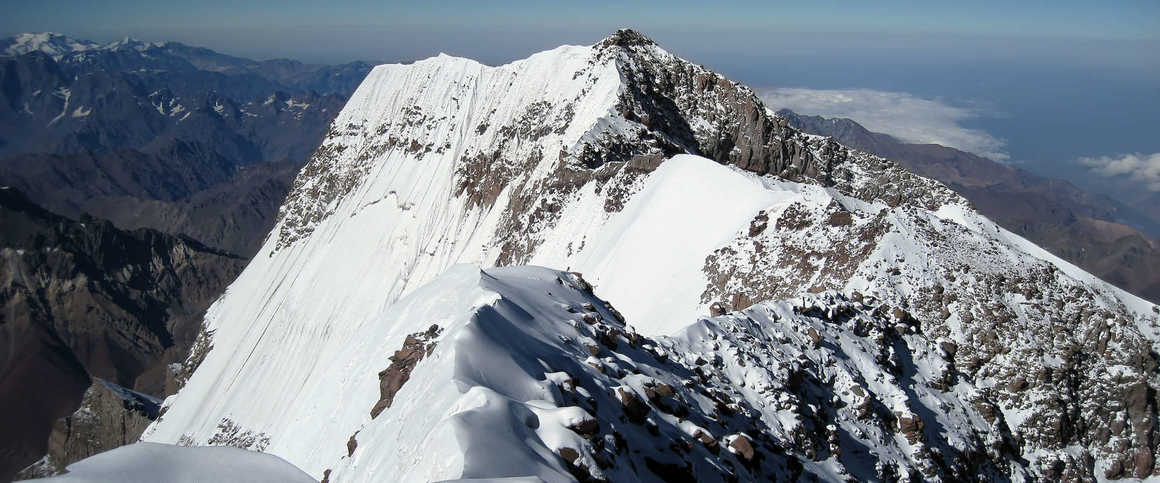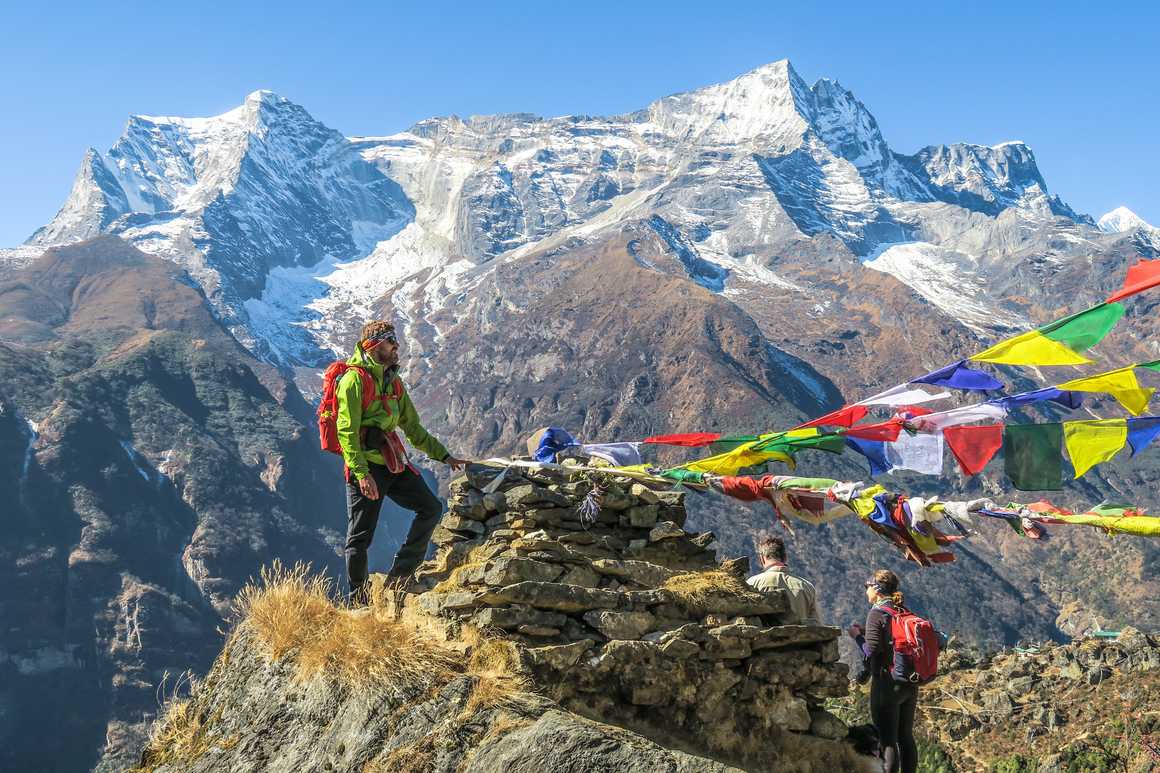The Seven Summits - The Tallest Mountains on Each Continent
Each summit presents its own unique set of difficulties,
from extreme weather conditions to technical climbing skills. Whether you’re
attempting one of the monumental Seven Summits for personal fulfilment or a
charitable cause, conquering just one of the tallest mountains on each
continent is a challenge and quite the claim to fame. It requires meticulous
planning, rigorous training and a passion for nature.
Besides the tremendous sense of achievement you will
undoubtedly feel after reaching the summit, completing one of the 7 Summits
allows climbers to explore diverse landscapes, experience different cultures
and witness breathtaking views from the top of the world. Read on to find out
more about the elusive Seven Summits of the world and ask yourself ‘are you up
to the challenge’?

What Are the Seven Summits?
Each of the 7 Summits presents a different set of
difficulties, some proving a challenge to even the most experienced climbers
and mountaineers. The only mountain categorised as one of the world’s Seven
Summits that requires no technical mountaineering skills or equipment is Kilimanjaro which is why it is a popular starting point for those who have little
experience trekking at altitude.
The Seven Summits of the world are a global mountaineering
quest that transcends geographical boundaries and pushes the limits of human
endurance. The challenge beckons adventure enthusiasts to summit the tallest
mountains on each continent but even conquering just one of these epic peaks is
a respected accomplishment and rightly so!
The 7 Summits Challenge
- Mount
Kilimanjaro, Tanzania
- Mount
Elbrus, Russia
- Aconcagua,
Argentina
- Vinson
Massif, Antarctica
- Puncak
Jaya, Indonesia
- Denali,
Alaska
- Mount
Everest, Nepal
Mount Kilimanjaro, Tanzania

Best times to
climb: June to October and December to March
There are 7
established Kilimanjaro routes and depending on which route you choose,
it takes between 5-9 days to reach Kilimanjaro summit and descend to the
finishing point. The longer you spend on the mountain, the more time your body
has to adjust to the change in altitude, allowing you a better chance of summit
success. Kandoo Adventures operate trips to Kilimanjaro on 5 of the 7
established routes. You’ll want to spend some time contemplating how long you
want to spend on the mountain and the best route to climb Kilimanjaro route for you.
Factors such as how
well you cope at high attitude, fitness level and mental stamina will also
impact how long it takes to climb Kilimanjaro. There’s no need to go
fast when climbing Kilimanjaro as our guides will set a pace that is completely
manageable, and our itineraries have been carefully planned to allow plenty of
time to cover the required distance each day. While you don’t need to be a
fitness fanatic to climb Kilimanjaro, preparing your body beforehand and having
a good level of fitness will make the time you spend on the mountain all the more
enjoyable.
For more
information, check out our Beginner’s Guide to Kilimanjaro.
Mount Elbrus, Russia
Elevation: 5,642m / 18,510ft
Best times to climb: July to August
Mount Elbrus is an inactive volcano in the Caucasus
Mountains in southwest Russia. Elbrus is one of the Seven Summits of the world
and the tallest mountain in the continent of Europe. It has two distinct
summits: the western summit, which is the highest point at 5,642m (18,510ft)
and the slightly lower eastern summit at 5,621m (18,442ft). The climb itself
takes trekkers through rugged terrain, making it a thrilling and rewarding
experience.
There are two main approaches to climb Elbrus – the South
side (5-6 days) and North side (6-7 days) routes. Although Mount Elbrus is
considered one of the easier of the Seven Summits, it still requires careful
planning and preparation. The cold weather and altitude can make this climb
pretty challenging and dangerous. Anyone looking to take on Elbrus is required
to understand basic technical skills like rope travel, crampons and the use of
ice axes on some steep snow slopes.
Aconcagua, Argentina

Elevation: 6,961m / 22, 838ft
Best times to climb: December to January
Located in the north of Argentina, Aconcagua is the highest
mountain in the world outside of the Himalaya, forming part of the Andes. A
popular choice for climbers who have previously summitted Kilimanjaro, Aconcagua is considered a ‘trekking peak’ and requires no prior expertise however, it is
a significant step up and tackling this mountain should not be taken lightly. In
terms of how difficult it is to climb Aconcagua, one of the 7 Summits and
tallest mountains on each continent, you need to be in great physical condition
as the trek can take up to 15 days or more trekking at extreme altitude.
The best time to climb Aconcagua is in the high
season between December and January as this period provides the optimal and
most stable weather conditions for trekking. Alternatively, mid-season from
early December to mid-February offers conditions that are almost as good as
high season, but the routes are much less crowded. With a short climbing
season, Aconcagua only supports a small number of climbing operators. Kandoo
Adventures are proud to be partnered with the best local operator that support
visitors on their journey to the summit of this epic peak.
For more information, check out our Aconcagua Climbing
Guide.
Vinson Massif, Antarctica
Elevation: 4,892m / 16,050ft
Best times to climb: December to February
Discovered in 1935 by American explorer Lincoln Ellsworth,
the Vinson Massif is the highest mountain in Antarctica and one of the world’s
7 summits. The mountain is named after Carl Vinson, a US congressman who
championed exploration of Antarctica. It is known for its extreme cold
temperatures and challenging conditions, making it a true test of endurance for
climbers.
Reaching the summit of the Vinson Massif requires some
technical skills and experience in navigating through icy terrain, as the route
takes climbers through glaciers, and steep snow-covered slopes. Despite its
challenges, the views from the summit are breathtaking with expansive views of
a pristine landscape virtually untouched by humans as far as the eye can see.
Puncak Jaya, Indonesia
Elevation: 4,884m / 16,024ft
Best times to climb: year round
Puncak Jaya, also known as Mount Carstensz or Jaya Peak, is
the highest mountain in Oceania, making it one of the world’s 7 summits.
Located in Indonesia, in the province of Papua, Puncak Jaya is one of the few
tropical or equatorial mountains in the world with glaciers. To make the climb
to the summit of Puncak Jaya, you’ll need to get a permit that’s been granted
by the centralised government from the Indonesian capital of Jakarta and the
climb must be completed with a guide.
Despite having the lowest elevation of the world’s highest
summits on each continent, Puncak Jaya is considered one of the most
technically difficult of the Seven Summits. Not only is this elusive mountain
situated in sheer isolation but it is a steep climb that requires the skilled
use of rappelling and jumar techniques. Climbing Puncak Jaya successfully will
highly depend on the weather conditions and being so close to the equator,
these conditions typically change really fast.
Denali, Alaska
Elevation: 6,190m / 20,310ft
Best times to climb: May to June
Located in Alaska in North America, Denali is often
considered the most difficult of the Seven Summits for a multitude of reasons.
Firstly, unlike many 8,000m climbs, Denali does not permit porters to carry
gear for paying customers so climbers are required to carry their own backpacks
and set up camps. Other difficulties include the high altitude, technicality of
the mountain and extreme weather conditions the mountain experiences.
While Denali presents a challenge for even the most
experienced climbers, its tremendous size and beauty generate a magnetism that
continually draws climbers from around the world hoping to reach its summit
each year. To successfully make the climb to Denali summit, one of the highest
peaks on each continent, climbers need to undergo rigorous training and you
should expect a mental test as well as a physical one.
Mount Everest, Nepal

Elevation: 8,849m / 29,035ft
Best times to climb: March to May
One of the most famous of the Seven Summits and tallest
mountains on each continent, Everest is the ultimate mountaineering adventure.
Climbing Everest requires a huge amount of dedication, and it is considered to
be very difficult, even for experienced mountaineers. Due to its extreme
altitude, unpredictable weather and treacherous terrain, only 6,664 people have
ever reached the summit of Mount Everest as of December 2023. Nepal climbing
regulations state that if you want to attempt the hike to the summit of Everest
you must be an experienced mountaineer, have a certificate of physical fitness
and have already climbed a Nepali peak of at least 6,500m.
At Kandoo Adventures, one of the most popular destinations
we run trips to is Everest Base Camp. Attracting around 40,000 visitors
every year, the trek to Mount Everest Base Camp is easily one of the most
famous trekking trails in the world but it is by no means an easy task. The
high point is an impressive 5,364m (17,598ft) and trekking to Everest Base Camp
requires plenty of training and an excellent level of overall fitness as you
will be hiking up to 8 hours a day for 7-8 days in a row. Our Guide to Everest
Base Camp covers everything you need to know about this unforgettable trek.










